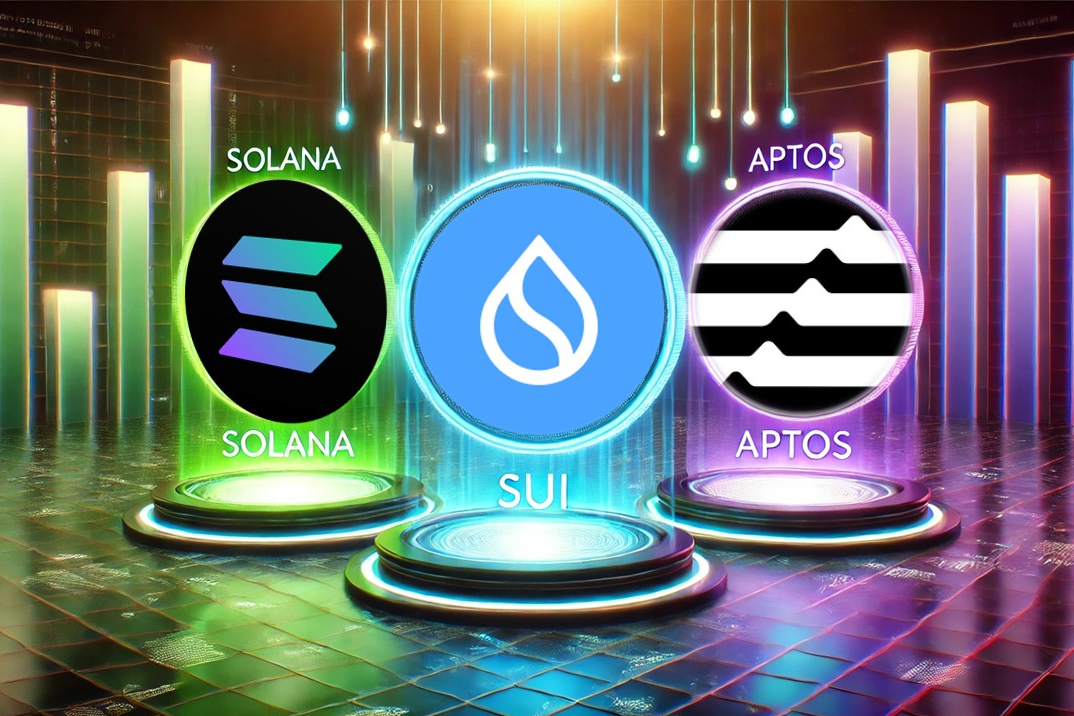2024-10-06

Monolithic blockchain networks that
combine different layers into a single, unified architecture—outperformed in
September 2024, according to VanEck's latest Crypto Monthly Recap. Notably,
Solana (SOL), Sui (SUI), and Aptos (APT) saw remarkable price gains of 14%,
118%, and 23%. These monolithic blockchains focus on fast transaction speed,
cheap transaction fees, and high throughput.
September 2024 marked a notable period
for “monolithic blockchains”, which combine consensus, execution, and data
availability into a single protocol. These blockchains, which integrate various
layers into a single, unified architecture, have shown significant
outperformance in comparison to their modular counterparts.
Monolithic blockchains like Solana,
Sui, and Aptos have demonstrated impressive gains, with price increases of 14%,
118%, and 23% respectively. The surge in Sui's performance, in particular, was
linked to a substantial rise in daily active addresses, propelling its market
capitalization beyond the $5 billion mark. Aptos also witnessed a boost in
daily active addresses, attributed to its recent Raptr software upgrade.
The appeal of monolithic blockchains
lies in their high throughput capabilities. For instance, networks like Solana
can theoretically handle up to 65,000 transactions per second without the need
for layer-2 scaling solutions. This efficiency makes them attractive platforms
for applications involving smaller payments, asset tokenization, and the
minting of non-fungible tokens (NFTs).
In September, so-called "monolithic"
blockchains, saw notable growth, led by Sui's impressive performance.
Sui's SUI token surged by 118%,
reaching a market capitalization of $5 billion.
The blockchain also experienced a
substantial increase in active addresses (up 140%) and revenues (up 48%)
compared to August. The primary drivers of this growth were a rise in memecoin
speculation and the introduction of native stablecoins, such as AUSD and USDC.
Sui’s unique object-based architecture,
which facilitates higher transaction throughput and lower latency, sets it
apart from competitors like Solana and Ethereum. This architectural advantage
has placed Sui among high-performance chains such as Solana and Aptos, which
are aiming to attract Web2 developers with their advanced capabilities. Solana
saw a 14% increase, while Aptos rose by 23%, both also experiencing notable
growth in September.
Solana Unveils
"Frankendancer" and Prepares "Firedancer" for Future Growth
Late September was significant for
Solana as supporters gathered in Singapore for the blockchain's annual
conference. A major highlight of the event was the announcement of the
much-anticipated "Frankendancer" upgrade on Solana’s Mainnet, alongside
the launch of "Firedancer" on its testnet. Both upgrades aim to
enhance Solana’s core software and boost its transaction capacity.
"Frankendancer" serves as an
early implementation of features from the more advanced "Firedancer,"
which claims to boost Solana’s transaction throughput by up to 20 times.
Firedancer has already demonstrated its capabilities, achieving 89,000
transactions per second (TPS) on testnet. Anatoly Yakovenko, Solana’s leader,
expressed confidence in these upgrades, even announcing that the blockchain's
“Beta” label will be removed once Firedancer is fully implemented—reflecting
significant advancements in reliability and capacity.
Aptos Sees Gains Despite Challenges,
Looks to Upcoming Upgrades
Aptos also had a solid month despite challenges, including an $11 million ($90.2 million) token unlock and slight declines in fee revenue (-8%) and DEX volumes (-2%). The main catalyst for Aptos’s price growth was the upcoming upgrade to its core software, named "Raptr," which has helped boost daily active accounts (DAAs) by 30% month-on-month.
Aptos claims that, once launched, Raptr
could reduce end-to-end transaction finality to as low as 800 milliseconds,
matching Sui’s current performance, and significantly faster than Solana's
current finality of around 2-3 seconds. More details of the upgrade are
expected in an upcoming whitepaper.
However, despite these technological
improvements, Aptos still faces challenges in attracting users. The share of
users on Aptos has fallen from 12% at the start of 2024 to just 5% today,
indicating a need for more compelling use cases to drive adoption and sustain
its growth.
Overall, while Sui led the performance
metrics in September, both Solana and Aptos are making strategic upgrades to
enhance their blockchain ecosystems, with a focus on scalability and developer
engagement.
VanEck's analysis also highlighted the
competitive edge these blockchains hold over Ethereum, which has seen a dip in
market share due to the emergence of these high-throughput competitors. The
lower transaction costs and faster processing times are enticing users to
migrate from Ethereum to monolithic blockchains, impacting Ethereum's price
performance throughout much of 2024.